
By David Kier
For over seventy years, from 1697 to 1768, the Jesuit Order of the Catholic Church had near-autonomy in the occupation and Christianization of the California Peninsula. They had founded 17 missions, in all directions from the first permanent headquarters, at Loreto. In the 1750’s they had begun to move northward in order to encircle the Gulf of California with their missions, once it was clear that California was not an island. That advance was halted with a political decision that forever changed the direction of the California missions.
The Franciscans were already chosen to replace the Jesuits in California, but the Dominicans had pleaded for some responsibility on the peninsula. Years of negotiations and revisions would transpire before the Dominican priests actually began serving the Baja California missions. The doorway to California mission service for the Dominicans opened once the 1767 Royal order of expulsion was delivered to the Jesuits missionaries. The Jesuits were forcibly removed from all their missions throughout the New World and sailed away from the coast of Baja California in February, 1768. The Franciscans were soon charged with occupying the ports of San Diego and Monterey, far to the north. An opportunity for other Catholic Orders to have a hand in the mission field was now available. The following is a summary of some of the events leading to the Dominicans arrival in Antigua (Old) California, later called Baja California:
July 24, 1768: A request for the administration of some of the Jesuit founded missions of Baja California was made by Dominican Fray Juan Pedro de Iriarte y Laurnaga. Iriarte was Procurator General for the Province of Santiago de Mexico, residing at the Royal Court of Madrid. He asked especially for those missions between the twenty-fifth and twenty-eighth degrees of north latitude.
December 17, 1769: The King (Carlos III) decided that ten Dominican fathers, destined for the nearest former Jesuit missions, should go there, but left the exact posts unspecified.
January 17, 1770: the Procurator-General, Fray Juan de Dios de Cordoba, recommended that Iriarte’s petition be granted, that the requested territory of Baja California be allocated, since there was urgent need tor the conquest of Nueva (New) California as a check against foreign encroachments.
June 15, 1770: Juan Pedro de Iriarte and Juan de Dios de Cordova asked the King for a grant of twenty four missionaries, at royal expense, for the missions of Baja California.
July 10, 1770: Iriarte issued a circular to the convents of the three Spanish Provinces of the Dominican order, announcing that the King had granted them a mission field in Baja California, and calling for volunteers.
April 30, 1772: The division of California was settled and the Dominicans accepted all of Baja California and the Franciscans had Nueva California, later called Alta California, as far north “as they can extend their spiritual conquests”. This arrangement was approved by the Council of the Indies on May 11, 1775.
September, 1772: Two boats were used to bring the Dominicans to California sailing from San Blas. Storms separated the boats and disaster would fall upon one. The storm, disease, and bad food forced one boat back to shore at Mazatlán. On board the doomed boat was their leader, Padre Iriarte. After arriving at Mazatlán he was taken to San Sebastián, where he died.
October 14, 1772: The successful boat with nine Dominican priests and one laybrother arrived at Loreto. Ten days later one of the priests died. Nearly six months would pass before news of the other boat carrying Dominicans had wrecked, and their leader, Padre Iriarte (and two other priests) had died.
May 12, 1773: Two boats brought the eighteen Dominicans who survived the shipwreck, arrived at Loreto. Three days later the padres were given their mission assignments (see list below). Now with 26 Dominicans in California, each of the missions would be assigned two, except for the far north missions of Santa María and San Fernando, which shared the same two priests. The Indians of Mission Santa María were transferred to Mission San Fernando the following year.
September 21, 1773: Padre Luis Sales arrived in Loreto after being delayed by his illness from the disastrous events of a year earlier. Sales was assigned to Mission Guadalupe.
ASSIGNMENTS OF THE 26 DOMINICANS AT THE 14 BAJA CALIFORNIA MISSIONS
May 15, 1773:
Loreto: Vicente Mora, Martín Zavaleta
San José de Comondú: Cristóbal de Vera, Andrés Souto
Nuestra Señora de Guadalupe: JoséSantolárria, Nicolás Muñóz
Purísima Concepción: Francisco Galistéo, Juan Antonio Formoso
San Francisco Javier: Manuel Pérez, Domingo Ginés
San José del Cabo: Gerónimo Soldevilla, José Lafuente
Todos Santos: José Fernández Salcedo, José Armésto
Santiago: Antonio Salas, José Estévez
San Ignacio: Juan Crisóstomo Gómez, José García Villatoro
Santa Rosalia (de Mulegé): Joaquín Valero, Antonio Luésma
Santa Gertrudis: Manuel Rodríguez, José Díez Bustamante
San Francisco de Borja: Manuel García, José Aivár
Santa María, San Fernando: Miguel Hidalgo, Pedro Gandiága
Next we will examine surviving mission documents and letters to discover what Dominican priests served at each mission, after the initial assignments of May 15, 1773. In some cases the missionary may have only been visiting and was not the resident priest. He also may have been at the mission other years than those listed or served at more than one mission the same year.
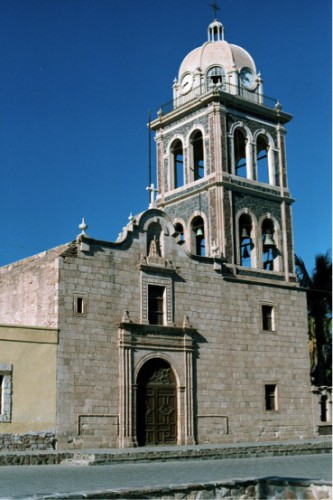 Loreto
Loreto
Francisco Galistéo 1779-1789
Nicolás Muñóz 1779
José Armésto 1790
Antonio Berraguerro 1793
José Herrera 1793-1794
Caietano Pallás 1794-1798
Pedro Acevedo 1795
Miguel Gallégo 1795, 1810
Pablo María de Zárate 1796
Plácido Sanz 1798, 1804
Vicente Belda 1798-1799
Rafaél Arviña 1799-1804
Ramón López 1812-1813
San Javier
Miguel Gallégo 1794
Gerónimo Soldevilla 1790-1798, 1808, 1810
Romantino de la Cruz 1812
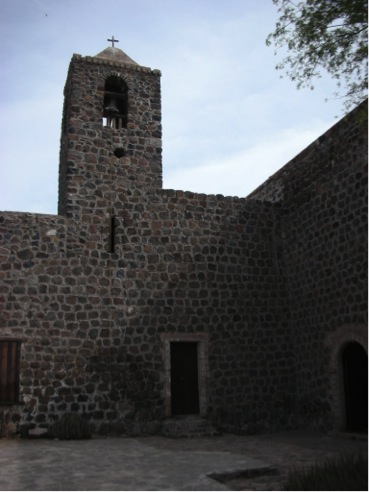 Santa Rosalia (de Mulegé)
Santa Rosalia (de Mulegé)
José Herrera 1783-1794
Miguel Gallégo 1795-1798
Rafaél Arviña 1796-1797
Domingo Timón 1798-1800
Vicente Belda 1802-1805
José Portela 1812
Tomás de Ahumada 1815
San José de Comondú
José Estévez 1791
José Aivár 1792
Ricardo Texéyro 1794-1796
Jorge Coéllo 1797-1798
Plácido Sanz 1803
José Antonio Sánchez 1812
Tomás Mansilla 1825-1826
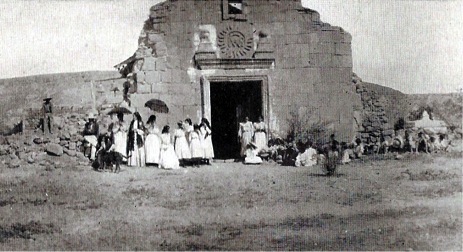 La Purísima
La Purísima
José Antonio Sánchez 1793-1812
Domingo Luna 1826
Guadalupe
Luis Sáles 1773-1778
Rafaél Arviña 1792-1795
Santiago
Manuel García 1776-1780
Francisco Hontiyuélo 1790-1794
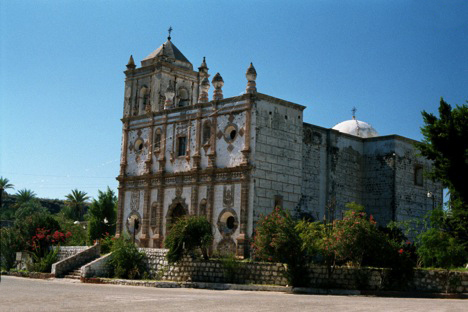 San Ignacio
San Ignacio
Joaquín Cálvo 1794-1795
Domingo Timón 1795-1798
Rafaél Arviña 1799-1802, 1804
José Espín 1805
Pedro Juan González 1812-1822
Félix Caballero 1840
San José del Cabo
Francisco Hontiyuélo 1794
Rafael Arviña 1795-1796
Eudaldo Surroca 1797-1798
Pablo María de Zárate 1798-1821
Ignacio Ramírez 1835-1841
José de Santa Cruz 1841-1844
Gabriel Gonzáles 1846-1848
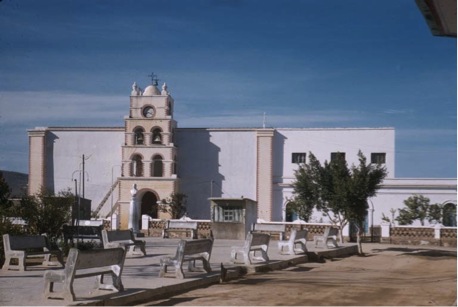 Todos Santos
Todos Santos
Mariano Fernández 1790-1811
Jacinto Tiól 1812-1820
José Duro 1822
Gabriel Gonzáles 1825-1840, 1850-1855
Santa Gertrudis
Joaquín Valero 1778
José Espín 1794-1798
Segismundo Foncubierta 1812
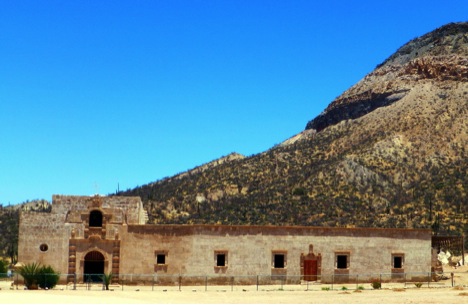 San Borja
San Borja
Luis Sáles 1778-1781
Antonio Caballero, Rafaél Caballero 1792-1794
Martín Zavaleta 1793
Mélchor Pons 1794, 1797
Juan María Salgado 1795-1796
Antonio Lázaro 1797-1798
Tomás de Ahumada 1805-1809
Ramón de Santos 1812
José Martín 1812-1816
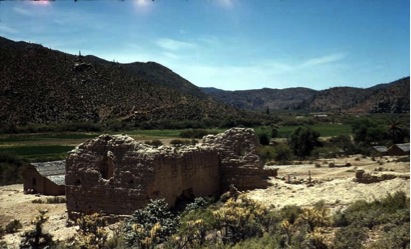 San Fernando
San Fernando
Francisco Galistéo 1773-1774
Antonio Luésma 1782-1783
Juan Antonio Formoso 1785-1788
Pedro Azevedo 1788-1789
Jórge Coéllo 1794
Rafaél Arviña 1797-1799
Vicente Belda 1797-1798
José Caulas 1797-1798
Antonio Lázaro 1799-1804
Manuel del Aguila 1804-1806
Ramón de Santos 1808-1811
Bernardo Solá 1811-1813
Tomás de Ahumada 1815
Antonio Menéndez 1815, 1822-1825 (from San Vicente)
José Martín 1818
Francisco Troncoso 1819-1822 (from El Rosario)
The Dominican Founded California Missions:
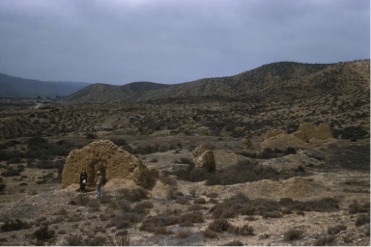 El Rosario (July 24, 1774)
El Rosario (July 24, 1774)
Francisco Galistéo 1774-1779
Manuel Pérez 1775-1788
Antonio Luésma 1781-1783
Pedro Gandiága 1790
Vicente Belda 1792-1798
Ramón López 1797
Juan Ríbas 1797-1802
Raymundo Escolá 1802-1807
José Caulas 1807-1814
Francisco Troncoso 1819-1822 (last resident missionary)
Antonio Menéndez 1822-1825 (from San Vicente)
Tomás Mansilla 1829 (from Santo Tomás)
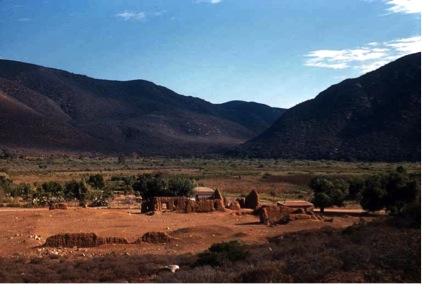 Santo Domingo (Aug. 30, 1775)
Santo Domingo (Aug. 30, 1775)
Manuel García 1775-1776
Miguel Hidalgo 1775, 1777-1780
José Aivár 1776-1792
José Estévez 1783-1785
Miguel Abád 1791-1804
Jáime Codina 1794-1797
José Miguel de Pineda 1804-1809
Bernardo Solá 1809-1811
Róque Valera 1811-1812
José Duro 1812-1819
Domingo Luna 1819-1822 (last resident missionary)
Antonio Menéndez 1822-1825 (from San Vicente)
Tomás Mansilla 1829-1850 (from Santo Tomás)
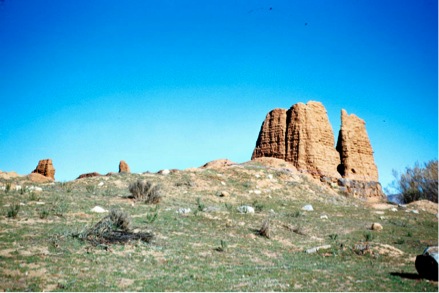 San Vicente (Aug. 27, 1780)
San Vicente (Aug. 27, 1780)
Miguel Hidalgo 1780-1781
Joaquín Valero 1780-1783
Luis Sáles 1781-1787
José Estévez 1785-1789
Juan Antonio Formoso 1789
José Loriénte 1790-1791, 1794-1795
Miguel Gallégo 1789-1794
Miguel Abád 1793
Tomás Valdellón 1793-1797, 1801-1803
Ramón López 1797-1806
Segismundo Fontcubierta 1797, 1799
Pedro González 1808
José Duro 1808-1811
Antonio Fernández 1811-1816
José Martinez 1817
Antonio Menéndez 1817-1825
Félix Caballero 1814, 1822-1829
Tomás Mansilla 1829 (from Santo Tomás)
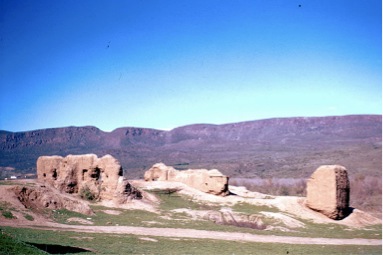 San Miguel (Mar. 28, 1787)
San Miguel (Mar. 28, 1787)
Luis Sáles 1787-1789
Caietano Pallás 1790-1791
Juan Salgado 1792-1793
Mariano Yóldi 1793-1804
Mariano Apolinário 1794-1796
Raymundo Escolá 1797-1800
Miguel Abád 1799
Tomás de Ahumada 1809-1815
Félix Caballero 1815-1834
José Martínez 1819-1822 (last resident missionary)
Domingo Luna 1829, 1833
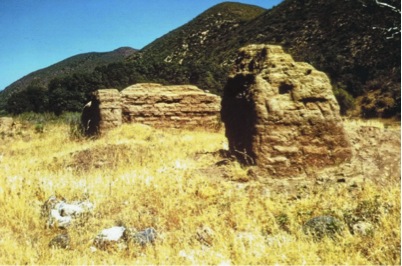 Santo Tomás (Apr. 24, 1791)
Santo Tomás (Apr. 24, 1791)
José Loriénte 1791-1797
Miguel López 1793-1803
Segismundo Fontcubierta 1798
Eudaldo Surroca 1802-1803
José Miguel de Pineda 1812-1826
Tomás Mansilla 1826-1849
San Pedro Martir (Apr. 27, 1794)
Caietano Pallás, Pablo Grijálva, José Loriénte 1794
Rafaél Caballero 1794-1797
Antonio Caballero 1794-1797
Juan Ríbas 1797
Mariano Apolinário 1797-1798
José Caulas, Miguel López, José Loriénte 1798
Eudaldo Surroca 1803
Juan Ríbas, Ramón de Santos, José Portela 1806
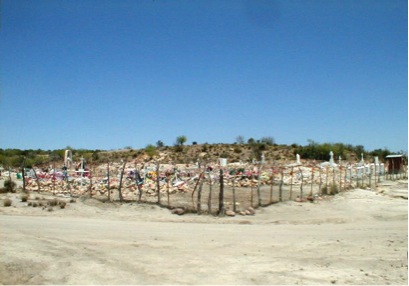 Santa Catalina (Nov. 12, 1797)
Santa Catalina (Nov. 12, 1797)
José Loriénte, 1797
Tomás Valdellón 1797-1804
Jacinto Fiol 1804-1807
Manuel de Aguila 1807-1809
Antonio Fernández 1809-1810, and 1815-1817 (from San Vicente)
José Duro 1810-1811
Manuel Saiz 1811-1812
Félix Caballero 1819-1839
Mexico and Spain were at war from 1810 to 1821. In 1822, the two Californias pledged their allegiance to Mexico. The Spanish Mission Era was over, but the need for instruction and expanding civilization necessitated the missions to remain in operation. Many Dominicans retired from service in Baja California in 1822. Those that remained after 1822, or arrived during the Mexican mission period include:
Félix Caballero (to 1840)
Gabriel Gonzáles (to 1855)
Domingo Luna (to 1832)
Tomás Mansilla (to 1855)
José Martínez (to 1836)
Juan Martínez (to 1840)
Antonio Menéndez (to 1825)
José Morquecho (to 1841)
José Miguel de Pineda (to 1826)
Ignacio Ramírez (to 1849)
José de Santa Cruz (to 1844)
Assisting the Dominicans in Baja California were three Mercedarians, who arrived in 1836:
Amado Aldana (to 1841)
Vicente Sotomayor (to 1851)
Ascenscio Torres (to 1845)
Two Mexican Missions:
El Descanso (San Miguel la Nueva) was established as a new location for Mission San Miguel in late 1809 or early 1810 by Padre Tomás de Ahumada, because of disastrous floods. Ahumada wrote that he moved the San Miguel mission to Descanso shortly after he arrived at San Miguel (June 19, 1809). Ahumada returned to the former site (San Miguel la Vieja), but Descanso likely remained active as a mission farm.
In 1830, Padre Félix Caballero re-established the site with a new church and other buildings constructed at El Descanso. Again, activity continued at both San Miguel locations, but they were both served by a single priest. Letters of the period use the word ‘mission’ to describe Descanso after 1830. That it was the San Miguel mission at a new site was made clear by the continuous referral to it as ‘New San Miguel’ and the previous location as ‘Old San Miguel’.
Guadalupe (June 25, 1834) was founded by Padre Félix Caballero and was made the administrative center for the northern Baja California missions. Caballero was assigned to Mission San Miguel in 1815 and it was his decision to move to Guadalupe and build there. Caballero named the mission at this new location in honor of Mexico’s patron saint.
While he would call it a mission, some historians considered it more of a way Caballero could attract mainland Mexicans to settle in the rich valley, and it was his own personal endeavor. It provided the services of a mission, but it was unable to attract Indians to stay there. Padre Caballero had to force baptism upon the native women and that angered the native Indian men to such a degree that in less than 6 years after it was founded, they destroyed the mission and wanted to kill Caballero. Caballero fled south to San Ignacio and died mysteriously a few months later, after drinking his morning chocolate.
Afterword
The Dominicans operated the missions of Baja California for 82 years through a period of growth, dramatic changes, and disappointments. To some historians they were harsh and unbending to the needs of the native Indians they hoped to Christianize and convert to modern living. What is clear is that the Dominicans constructed many missions, including the cut stone churches at San Ignacio, Santa Gertrudis and San Borja. The Dominicans inherited a land that was already in decline, yet performed vaccinations to try and save the lives of those infected by European diseases. They endured years of neglect during the two wars (1810-1821 & 1846-1848), and a change of government in Mexico that attempted to secularize their missions. Still, they remained on the peninsula the longest of the three Orders assigned to mission duties in California. The last Dominican that came to Baja California to serve the missions was José de Santa Cruz, in 1841. The last Dominicans missionaries on the peninsula were Tomás Mansilla and Gabriel Gonzáles who left Baja California together from La Paz on or about Feb. 5, 1855.
The stories and details of the mission period in Baja California continue to entertain and enlighten us as to happenings in this harsh and rugged land, so many years ago.
References
‘The Dominican Mission Foundations in Baja California, 1769-1822’ by Albert Nieser, 1960
‘The Missions and Missionaries of California’ (Vol. 1, Lower California) by Zephyrin Engelhardt, 1929
‘The Dominican Mission Frontier of Lower California’ by Peveril Meigs, 1935
‘Observations on California, 1772-1790’ by Luis Sales, translated by Charles Rudkin, 1956
‘Historical Notes on Lower California’ by Manuel Rojo 1879, translated by Philip Gericke, 1972
‘The Peninsular California Missions, 1808-1880’ by Francis Weber, 1979
‘The Old Missions of Baja & Alta California, 1697-1834’ by Max Kurillo and David Kier, 2012
David Kier is co-author of ‘The Old Missions of Baja & Alta California, 1697-1834’. The book is available for purchase HERE or at the DBTC offices (call 800-727-2252). You can also read about the history of all of the Missions of Baja California.
